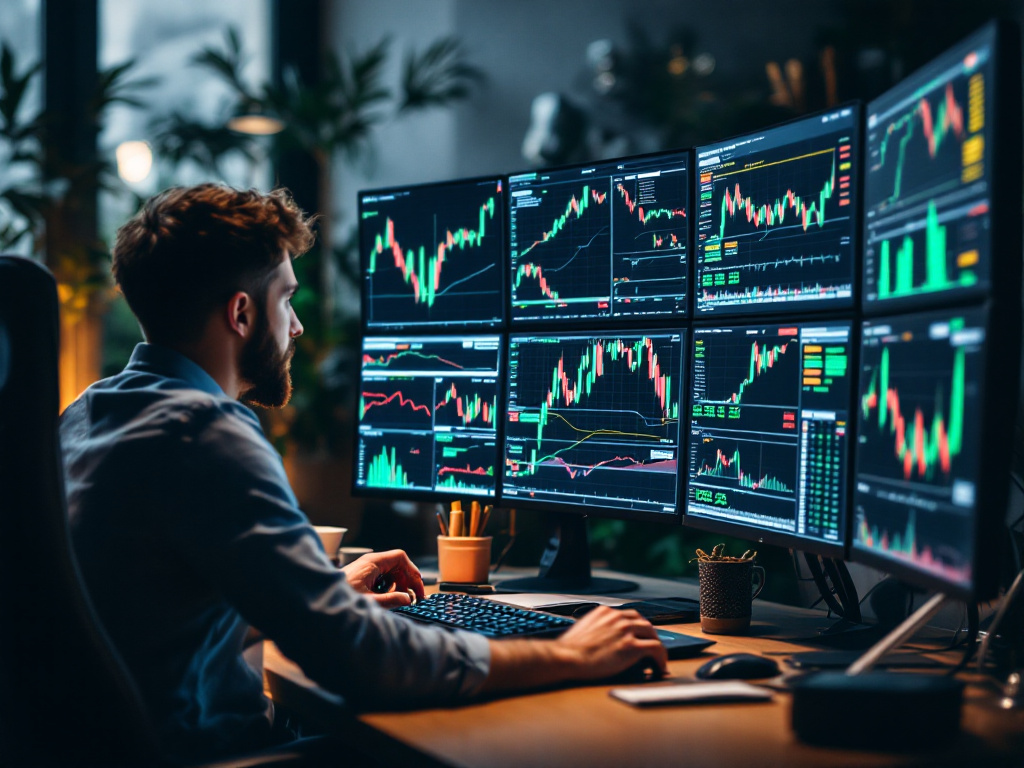Unlocking Profit with Mean Reversion Models
In today’s fast-paced trading environment, the concept of mean reversion models has emerged as a robust approach to capturing market opportunities. These models operate on the idea that asset prices will revert back to their historical average over time. With advancements in technology, traders are leveraging automated systems to implement mean reversion trading strategies effectively. Whether you’re looking at mean reversion indicators, trading systems, or algorithms, this comprehensive guide is designed to equip you with the knowledge to make informed decisions.
The Fundamentals of Mean Reversion
Mean reversion is a statistical concept that suggests that prices and returns eventually move back towards their historical mean or average. In trading, this idea is particularly powerful, as it can be used to identify overbought or oversold conditions. Traders apply various technical tools and indicators to achieve a balanced view, often integrating mean reversion trading strategies with other market signals for more robust decisions.
How Mean Reversion Models Work
At the core of mean reversion models is the analysis of price patterns. The key assumption is that extreme movements (either up or down) will eventually normalize. This principle is applied using sophisticated mathematical models that can trigger buy or sell signals. Whether you are considering automated mean reversion trading software or developing a manual strategy, understanding these mechanisms is crucial. Many traders also explore buy mean reversion trading robot or purchase mean reversion trading algorithm options to automate these processes.
Practical Trading Strategies
Implementing a mean reversion trading strategy can significantly enhance your portfolio. For instance, a popular approach involves combining technical indicators with statistical measures to pinpoint entry and exit timings. Traders also discuss mean reversion trading systems that blend across different asset classes, like Forex. For example, many traders looking for the best mean reversion trading system for MetaTrader leverage the platform’s advanced charting and automation features.
Moreover, many traders are now exploring mean reversion trading indicators that are specifically tailored to highlight temporary market inefficiencies. These indicators not only signal potential reversals but also help in risk management by setting appropriate stop-loss levels. A comprehensive analysis of different trading methodologies, including a deep dive into mean reversion trading systems and algorithms, is crucial for success.
Real-World Applications and Benefits
The practical application of mean reversion models in financial markets is vast. Several studies have shown that these models can help balance risk and reward effectively. In volatile market conditions, mean reversion provides a systematic way to mitigate risk, particularly when paired with cutting-edge technology. As more traders seek to automated mean reversion trading software, there is a growing interest in systems that offer both speed and precision.
Innovations in Automated Trading
Today, automation plays a critical role in executing mean reversion strategies. Automated systems can monitor vast amounts of market data in real time, allowing traders to react swiftly to changing conditions. The innovation behind automated mean reversion trading software enables traders to eliminate emotional bias, ensuring that trade decisions are grounded in logical, statistical analysis.
In-Depth Look at Trading Algorithms
A critical component of modern trading systems is the development and deployment of robust trading algorithms. Many traders are now turning towards mean reversion algorithms that offer refined decision-making capabilities. The algorithms are fine-tuned to execute trades precisely when market conditions deviate from the statistical norm, capitalizing on short-term inefficiencies.
Strategies for Different Markets
Whether you are trading stocks, commodities, or Forex, a well-designed mean reversion trading strategy can be adapted to a variety of market conditions. For instance, in Forex markets, traders often test strategies such as the mean reversion trading strategy for Forex to determine the ideal moment to buy or sell currencies. This diversification in strategy allows traders to maintain flexibility and resilience in their portfolios.
Risks and Considerations
While mean reversion models provide significant benefits, there are inherent risks involved. No trading strategy is foolproof, and understanding the limitations of statistical models is essential. False signals and prolonged deviations from the mean can lead to unexpected losses. As such, risk management practices, including the use of stop-loss orders and diversification, are crucial when implementing these strategies.
Case Studies and Success Stories
Many successful traders attribute part of their consistent performance to the implementation of mean reversion models. Case studies have highlighted scenarios where well-calibrated indicators and automated systems have turned market volatility into a profitable trading edge. Traders often share testimonials about how integrating advanced mean reversion trading systems has led to improved trading performance and more reliable returns.
For traders seeking to further enhance their systems, exploring options such as the purchase mean reversion trading algorithm or other automated tools provides a significant advantage. By leveraging historical data and real-time analytics, these systems optimize entry and exit points, ensuring that risks are minimized and profits are maximized.
Integration with Other Trading Strategies
While mean reversion forms a strong standalone strategy, its integration with other techniques can enhance overall performance. Many expert traders combine it with momentum or breakout strategies. By understanding market dynamics thoroughly and studying the strengths of various approaches, traders can construct a portfolio of strategies that complement each other. The natural synergy between systems such as mean reversion trading systems and trending algorithms is well recognized in the trading community.
Tools and Resources for Continuous Improvement
To stay competitive, traders must continuously refine their strategies. Leveraging technology for back-testing and simulation, many resort to advanced trading platforms that support automated mean reversion trading software. Regular review of performance metrics and adaptation of the strategies based on market changes are key for sustained success. It’s not uncommon to find platforms that offer a blend of real-time analytics, historical data access, and cutting-edge research on mean reversion models.
Conclusion
Mean reversion models represent a powerful tool in any trader’s arsenal. Their ability to detect and capitalize on market inefficiencies makes them invaluable, especially when used in automated trading environments. Whether you’re a seasoned trader or new to the financial markets, integrating these strategies can potentially improve your trading outcomes. The future of trading lies in the synergy between advanced analytics and proven trading models, making now the perfect time to explore mean reversion in greater depth.
By understanding both the science and art behind these models, traders can achieve a balanced and well-rounded approach to market analysis. Remember, continuous learning and adaptability are key in navigating the complexities of modern financial markets.






